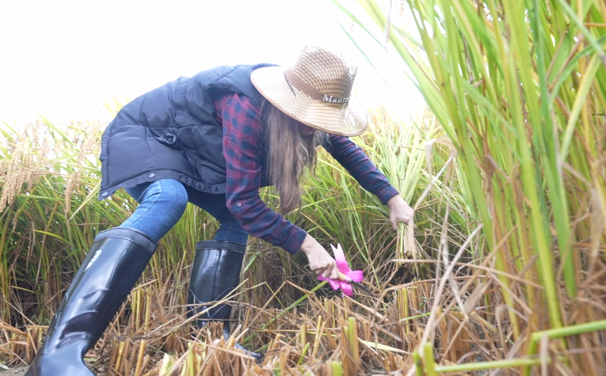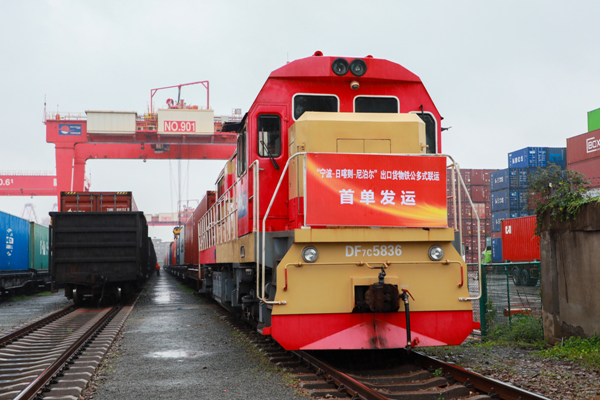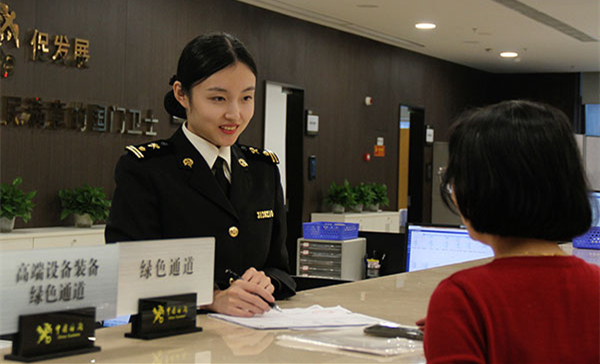Shenzhou XIII mission a success in testing tech for space station
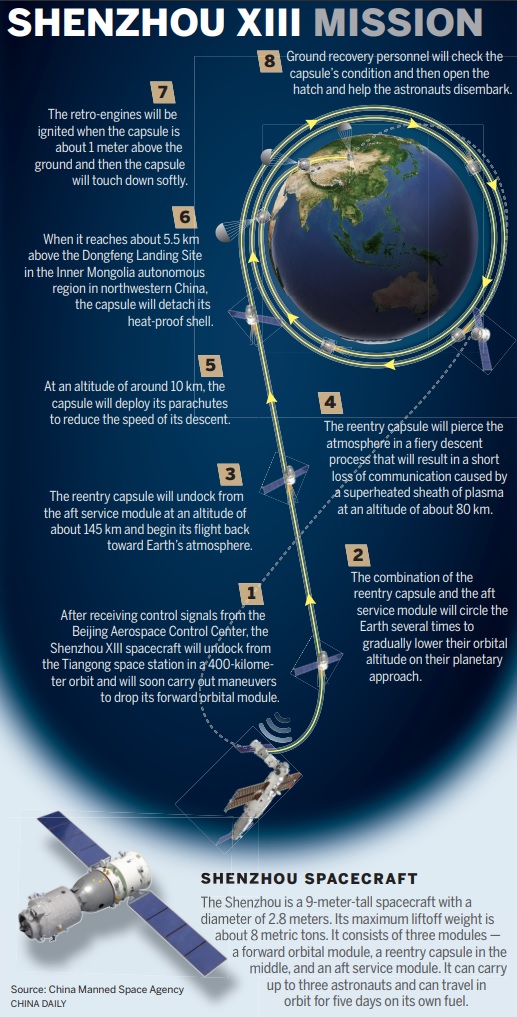
SHENZHOU XIII MISSION/CHINA DAILY
Foundation laid for forthcoming in-orbit assembly of Tiangong
The Shenzhou XIII mission has concluded the technology demonstration phase in the construction of China's Tiangong space station, according to a senior space official.
Hao Chun, head of the China Manned Space Agency, told a news conference in Beijing on Sunday that the phase, which included the deployment of Tiangong's core module and two manned spaceflights, has laid a solid foundation for the in-orbit assembly of Tiangong in coming months.
"During the technology demonstration phase, we verified key technologies needed in the construction and operation of a space station, like regenerative life-support and robotic arm-enabled repositioning technologies," he said. "We have also carried out a number of scientific experiments and technological tests that resulted in world-class achievements."
In addition, the Shenzhou XII and XIII missions-both of which were crewed flights-enabled mission controllers to improve their planning and management systems and upgrade ground facilities, according to Hao.
After being in orbit for six months, the three crew members of the Shenzhou XIII mission departed Tiangong, or Heavenly Palace, and returned to Earth on Saturday morning, completing the nation's longest manned spaceflight.
Major General Zhai Zhigang, Senior Colonel Wang Yaping and Senior Colonel Ye Guangfu breathed fresh air for the first time after their half-year space journey when ground recovery personnel opened the hatch of their reentry capsule at 10:03 am.
The capsule touched down at the Dongfeng Landing Site in the Inner Mongolia autonomous region at 9:56 am after flying nine hours in a reentry trajectory.
They were then carried out one by one by ground workers and placed onto chairs in front of the capsule.
"I am feeling very good. We want to report to the motherland and the people that we have successfully completed the Shenzhou XIII mission. We wish to thank President Xi Jinping for his care and attention. We thank all the Chinese people for their support and encouragement. Our gratitude also goes to all those involved in our mission who accompanied us day and night," Zhai, the mission commander, told China Central Television during a live broadcast.
"It is the power and strength of our country that built us the advanced space station. I am proud of my great motherland," he said.
Wang, the first Chinese woman to board Tiangong and the first female Chinese spacewalker, told the State broadcaster that she was very happy to return to the motherland and wants to tell her young daughter that "mom has come back after reaching for the stars".
Carrying the crew, the Shenzhou XIII spacecraft undocked from Tiangong at 12:44 am on Saturday.
In the last hours of their stay inside the Tiangong, the astronauts worked with ground controllers to configure the station, transmit some experimental data back to Earth and sort out materials, according to the agency.
Zhai and his crewmates spent 183 days in an orbit about 400 kilometers above the Earth after their Shenzhou XIII spacecraft was launched on Oct 16 by a Long March 2F carrier rocket from the Jiuquan Satellite Launch Center in Inner Mongolia. The crew set a record for China's longest spaceflight, almost doubling the previous record of 92 days created by their peers in the Shenzhou XII mission who were onboard Tiangong from mid-June to mid-September last year.
Due to the Shenzhou XIII mission, Wang has spent more time in space than any other Chinese astronaut-a total of 198 days in orbit.
During their space journey, the astronauts carried out two spacewalks that totaled more than 12 hours. They mounted components on the station's robotic arm and used it to practice extravehicular maneuvers, verified the arm's capabilities and its compatibility with the crew's needs, examined the safety and performance of support devices for extravehicular activity and also tested the functions of their extravehicular suits.
Wang took part in the first spacewalk on Nov 7, becoming the first female Chinese spacewalker.
The crew members also conducted two science lectures for Chinese students. In those lectures livestreamed worldwide by China Media Group, the astronauts showed viewers how they live and work inside the gigantic space station and demonstrated phenomena only possible in microgravity, including "disappearing buoyancy" and a "water ball".
In one experiment, Wang used a toy figurine of Bing Dwen Dwen, the popular mascot of the 2022 Beijing Winter Olympic Games, to display how objects float in a weightless environment.
The Shenzhou XIII's space-based lessons marked the start of the Tiangong Class series, China's first extraterrestrial lecture series that aims to popularize space science and inspire youngsters to pursue their "science and space dreams", according to the manned space agency.
The classes were also special to Wang, as she was the one who gave the nation's first space-based lecture inside an experimental space station module to more than 60 million Chinese students during the Shenzhou X mission in June 2013. That lecture made China the second country, following the United States, to deliver a lesson to schoolchildren from space.
In early February, the Shenzhou XIII astronauts spent Spring Festival, or Chinese Lunar New Year, inside the orbiting station, becoming the first Chinese people to celebrate the country's most important traditional festival in outer space. They appeared in a live broadcast and sent their best wishes to Chinese people.
Several days before their return, Zhai and his crewmates recorded a video in which they answered questions solicited from students across the United States who were curious about their lives and tasks on board.

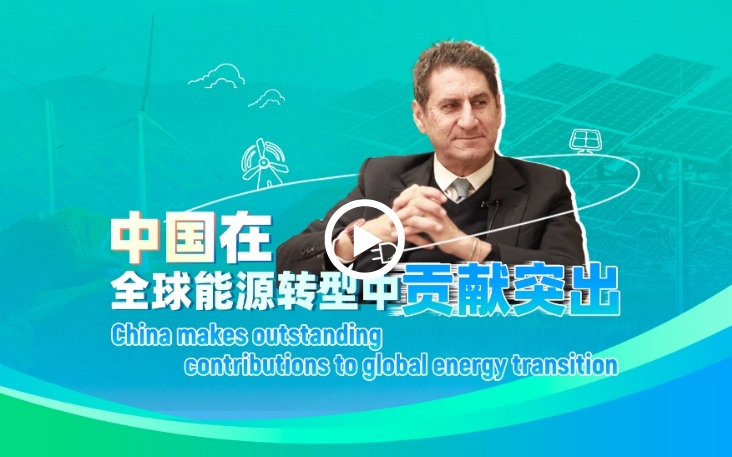 China makes outstanding contributions to global energy transition
China makes outstanding contributions to global energy transition 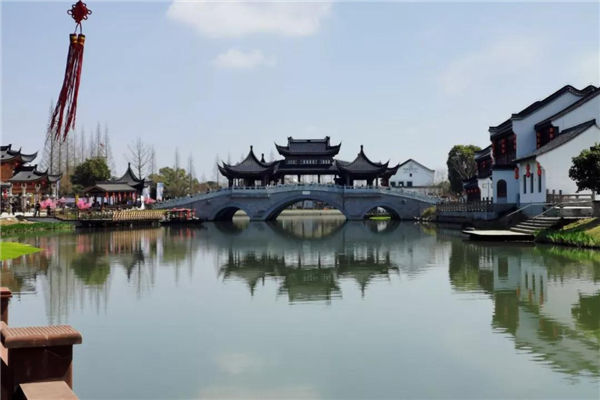 Ningbo village inspires Malawi official
Ningbo village inspires Malawi official  A look at China's economic data in the first three quarters of 2024
A look at China's economic data in the first three quarters of 2024 